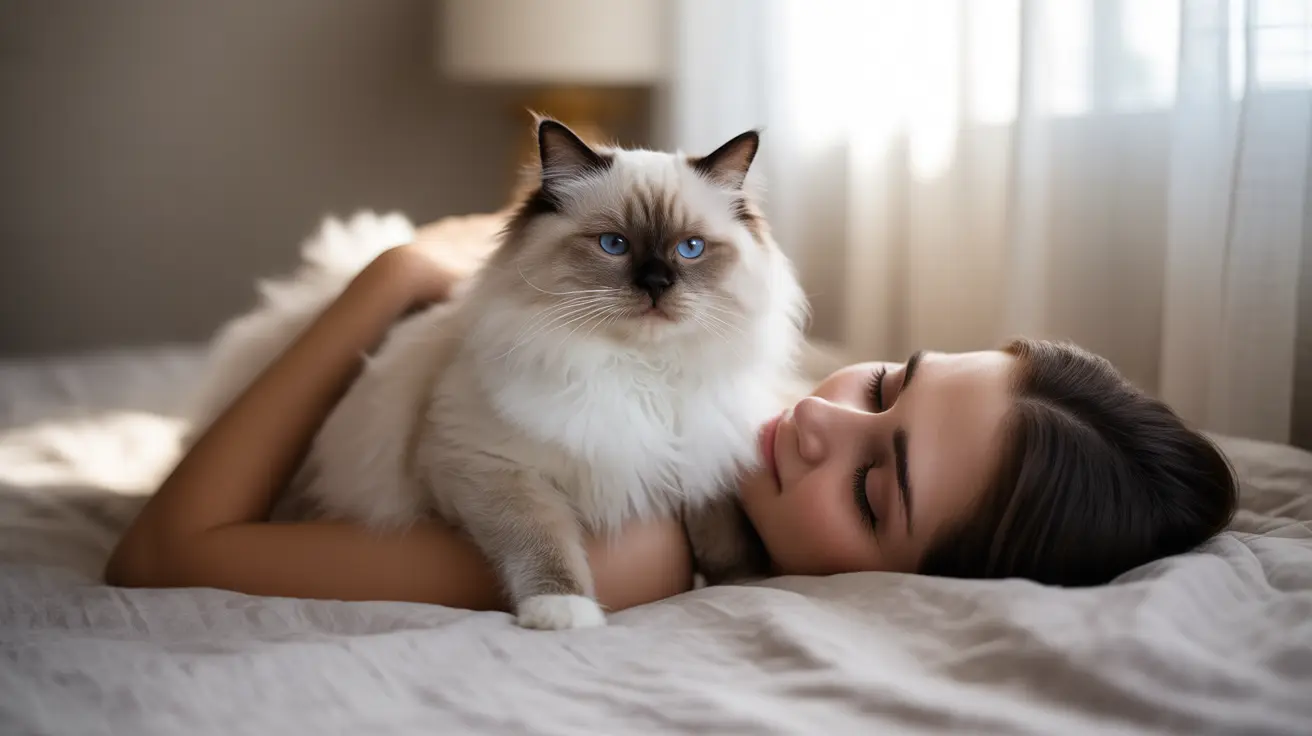The Science Behind Face-Sitting Behavior
Cats are naturally drawn to warmth, and your face happens to be one of the warmest parts of your body. The human head releases significant heat, making it an attractive spot for heat-seeking felines. Additionally, your face provides a combination of soft texture and elevated positioning that appeals to a cat's natural instincts.
Research shows that cats maintain a body temperature of around 102°F (39°C), explaining their persistent search for warm resting places. Your face serves as an ideal heating pad from their perspective.
Marking Territory and Showing Affection
When your cat sits on your face, they're actually engaging in a form of scent marking. Cats have scent glands in their faces and paws, and by sitting on you, they're leaving their unique signature while simultaneously creating a shared "family scent."
This behavior is a sign of deep trust and affection. In the wild, cats are most vulnerable while sleeping, so choosing to rest on your face indicates they feel completely safe with you.
Social Bonding and Security
Cats are more socially complex than many people realize. When they choose to sit on your face, they're often seeking to strengthen their bond with you. This behavior mimics the close physical contact observed between bonded cats in the wild.
Studies have shown that cats can actually recognize and respond to human emotional states. By positioning themselves near your face, they may be attempting to offer comfort or seeking emotional reassurance.
Managing Your Cat's Face-Sitting Habit
While this behavior demonstrates trust and affection, it's not always convenient for the human involved. If you need to discourage face-sitting, try these approaches:
- Provide alternative warm sleeping spots nearby
- Create a cozy bed at head level
- Establish a consistent bedtime routine
- Gently redirect your cat to a more suitable location
Health and Safety Considerations
While generally harmless, there are some health aspects to consider when your cat regularly sits on your face:
- Keep your cat's fur clean to minimize allergens
- Ensure regular veterinary check-ups
- Monitor for signs of excessive dependency
- Consider hygiene implications, especially if you have allergies
Frequently Asked Questions
Why does my cat sit or sleep on my face instead of other parts of my body?
Cats are attracted to your face because it's warm, elevated, and releases more heat than other body parts. Additionally, your face provides them with a clear view of their surroundings while maintaining close contact with you.
Is it normal for cats to seek warmth by sitting on their owner's face?
Yes, this is completely normal behavior. Cats naturally seek out warm spots, and your face provides both warmth and comfort, making it an attractive resting place.
What does it mean when my cat chooses my face as their sleeping spot?
This behavior typically indicates deep trust, affection, and a strong bond with you. It's also a way for your cat to mark you with their scent and feel secure while resting.
How can I gently discourage my cat from sitting on my face at night?
Provide alternative warm sleeping spots, establish a bedtime routine, and consistently redirect your cat to more appropriate locations. Use positive reinforcement when they choose the right spot.
Are there any health risks if my cat regularly sleeps on my face?
While generally safe, potential risks include allergic reactions, minor scratches, or disturbed sleep. Maintain good hygiene and consult your veterinarian if you have specific health concerns.
Conclusion
Your cat's face-sitting behavior, while sometimes inconvenient, is ultimately a sign of trust and affection. Understanding the reasons behind this quirky habit can help you appreciate your cat's unique way of showing love while allowing you to manage the behavior effectively if needed.
Remember that each cat is unique, and their specific reasons for face-sitting may vary. As long as both you and your feline friend are comfortable with the arrangement, this peculiar behavior can be seen as just another endearing aspect of the special bond between cats and their human companions.






